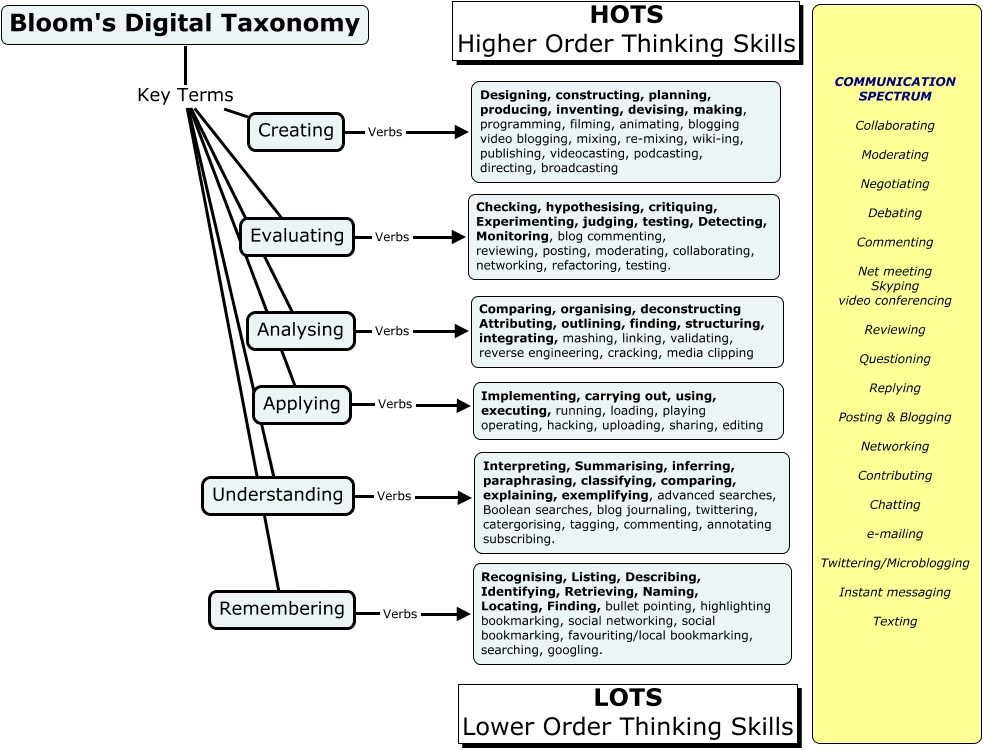
by Staff
At Teachthought, we have described Bloom’s taxonomy as “a hierarchical order of cognitive skills that can, among countless other uses, help teachers to teach and students to learn”.
Whether you conceive instructions, assess an assessment or observe a classroom, Bloom remains a powerful tool to understand how the thought occurs – and how we can better support it thanks to the intentional lesson design.
Bloom digital taxonomy Bases on this framework by aligning these same cognitive levels – you remember, understand, apply, analyze, assess and create – with digital tools, media and current tasks. In doing so, it helps educators design lessons rich in technology that promotes reflection, not just digital occupied work.
The graph below is a visual version of this concept. He maps common digital activities – such as blogs, podcasts, bookmarks, marking, networking and construction of wiki – for Bloom’s Bloom. Originally created by Andrew’s churches on Edorigami Wikispaces, now disappeared, this continuous adaptation of offering a useful means of visualizing how cognitive demand varies from one digital task to another.
Are you looking for practical verbs in class instead of tasks types? Explore our complementary list of the 126 digital verbs of Bloom for teaching rich in technology.
Use Bloom’s digital taxonomy in the modern class
While Bloom’s is often used to plan assessments or differentiate teaching, this version encourages teachers to also Evaluate the cognitive complexity of digital work. Do students seek and repeat themselves, or synthesize, do they design and think?
THE Communication spectrum To the right of the graph, puts more emphasizes how learners engage with others in digital spaces – from messaging and publication to more nuanced forms of collaboration.
What about AI tools like Chatgpt?
AI tools as Cat Present new challenges and opportunities when seen through Bloom’s objective. For example, encourage ChatPPT to Summarize an article could fall under Understandingwhile asking him to generate interview questions could land in Application or even Creation—Densitization on how the output is used by the student. The key is in the task design And how learners should interact with the tool.
A point
This version of Bloom’s does not only concern technical tools for “tasks”. Instead, that (hopefully) helps educators see the Reflection requests Integrated into digital activities – Make the skills least visible in Chatppt, streaming, social sharing, podcast creation, etc.
Do you want a full list of verbs based on this frame? Discover the digital verbs of 126 Bloom for teaching rich in technology.
Need a traditional version for prices planning and evaluation? Visit the verbs of bloom taxonomy for teaching and evaluation.
Teachthought’s mission is to promote critical thinking and innovation education.



